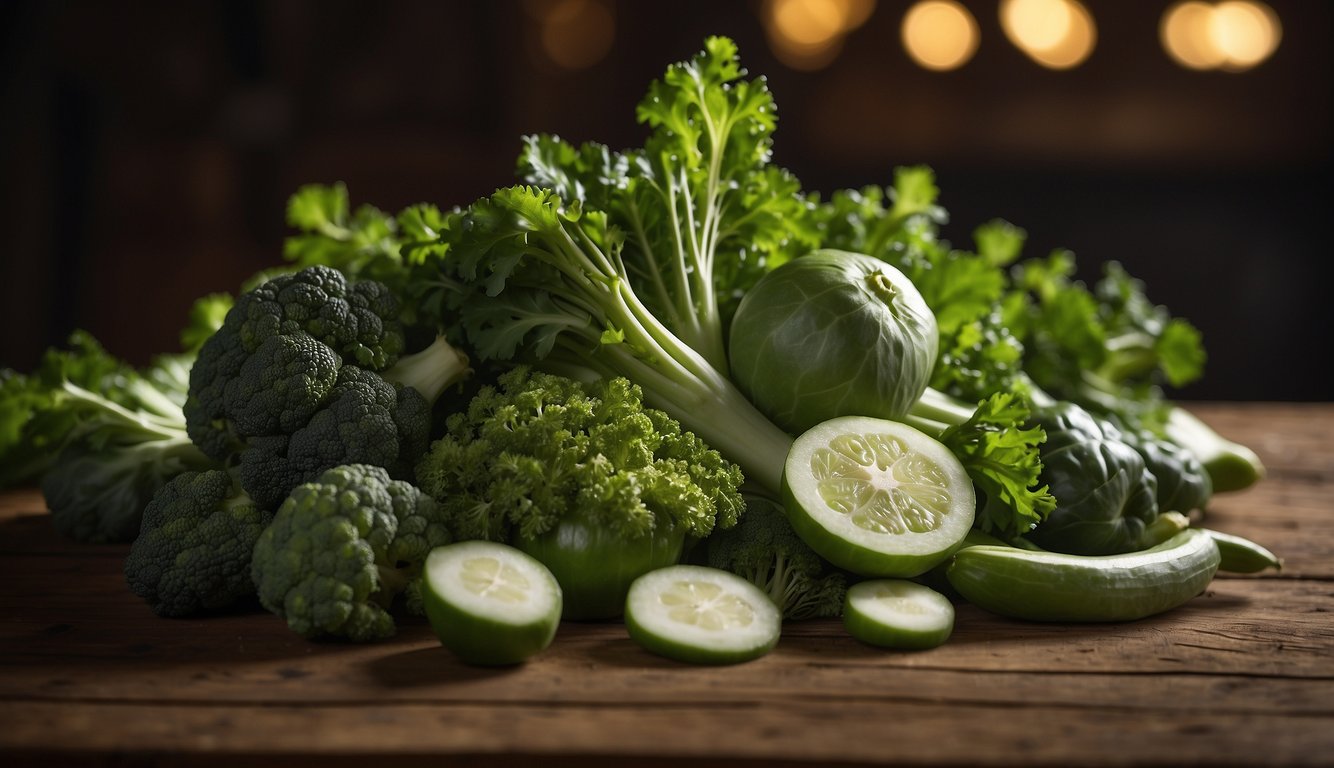As a self-proclaimed vegetable enthusiast, I’m always hunting for new and exciting produce to add to my meals. While the usual suspects like broccoli, spinach, and kale are delicious and nutritious, sometimes it’s fun to switch things up and try something a little more unusual. That’s where weird green vegetables come in.
These unique vegetables can add a pop of color and flavor to any dish, and they’re often packed with nutrients that you might not find in more common veggies. From kohlrabi to celeriac, there are plenty of options out there to choose from. Whether you’re a seasoned home cook or just starting out, experimenting with these unusual vegetables can be a fun way to expand your culinary horizons.
When it comes to selecting weird green vegetables, it’s important to keep an open mind and be willing to try something new. You might be surprised at how delicious and versatile some of these lesser-known veggies can be. So why not take a trip to your local farmers market or specialty grocery store and see what unusual produce catches your eye? Who knows, you might just discover your new favorite vegetable.
Understanding Weird Green Vegetables
As a food enthusiast, I enjoy exploring different types of vegetables and discovering their unique tastes and textures. One of my favorite categories of vegetables to experiment with is the weird green vegetables. These vegetables are often overlooked in the produce section, but they can add a lot of variety to your diet. In this section, I will define the characteristics of weird green vegetables and discuss their nutritional value.
Defining Characteristics
Weird green vegetables are called so because of their unusual shapes, colors, or textures. They can be long and skinny, like yardlong beans, or bulbous and round, like kohlrabi. Some have spiky leaves, like dandelion greens, while others have fuzzy skins, like kiwano melons. The key characteristic of weird green vegetables is that they stand out from the crowd.
Nutritional Value
Weird green vegetables are not only interesting to look at, but they are also packed with nutrients. Many of these vegetables are rich in vitamin C, which is an important antioxidant that helps protect your cells from damage. They are also high in fiber, which can help you feel full and aid in digestion. Some, like kale and collard greens, are excellent sources of vitamin K, which is important for bone health.
In addition to their nutritional value, weird green vegetables can add variety to your diet. By incorporating these vegetables into your meals, you can explore new flavors and textures. For example, bok choy has a mild, slightly sweet flavor that pairs well with stir-fries, while fiddleheads have a nutty taste that can be enjoyed on their own or in salads.
Overall, weird green vegetables are a great addition to any diet. They are not only interesting to look at, but they are also healthy and flavorful. Incorporating these vegetables into your meals can help you explore new culinary horizons and improve your overall health.
Popular Types of Weird Green Vegetables
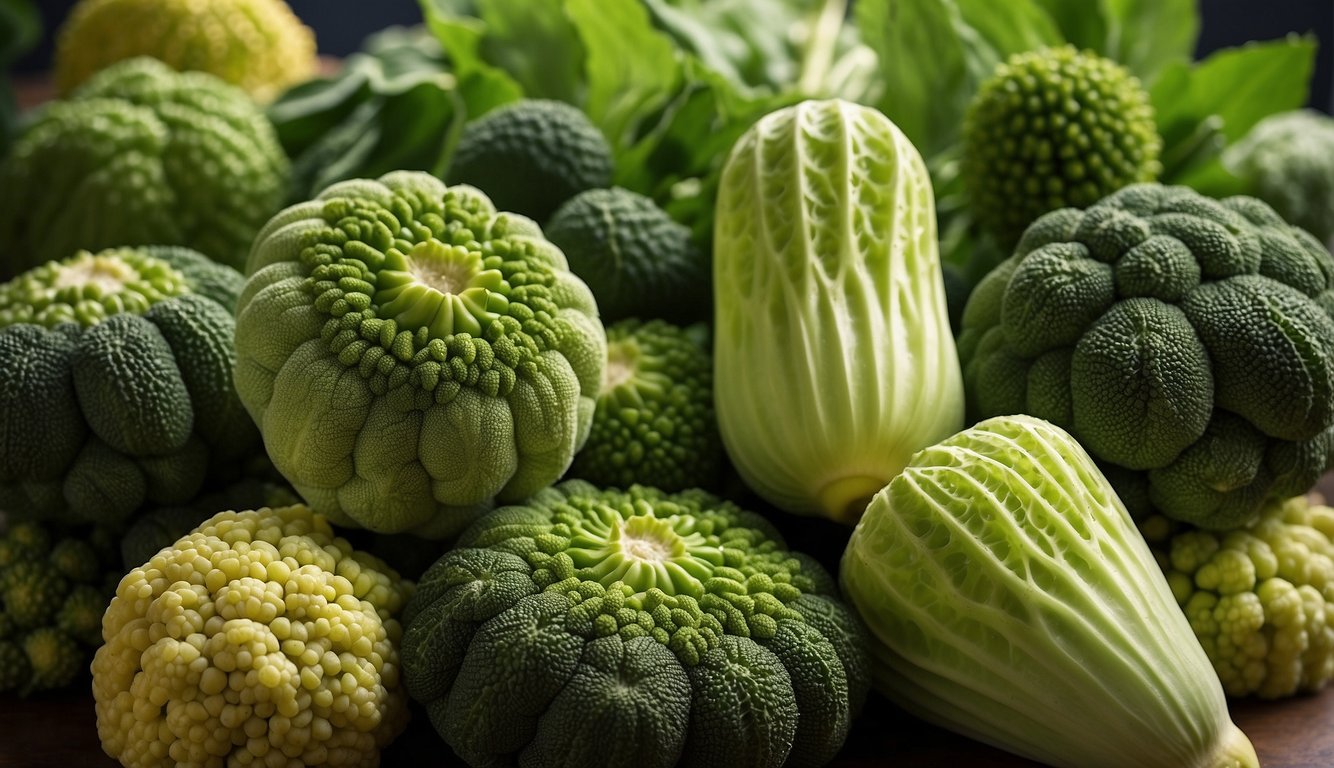
As a vegetable enthusiast, I always love to explore the world of weird green vegetables. From leafy greens to exotic stems and shoots, there are so many unique and unusual vegetables that can add a new dimension to your meals. In this section, I will introduce you to some of the most popular types of weird green vegetables and their benefits.
Leafy Greens and Their Benefits
Leafy greens are a great source of vitamins, minerals, and fiber. Some of the most popular leafy greens include kale, spinach, lettuce, and sorrel. Kale is a superfood that is packed with nutrients like vitamin K, vitamin C, and beta-carotene. Spinach is another superfood that is rich in iron, vitamin K, and calcium. Lettuce is a low-calorie vegetable that is high in water content and can help you stay hydrated. Sorrel is a tangy green that is high in vitamin C and antioxidants.
Uncommon Cruciferous Vegetables
Cruciferous vegetables are a family of vegetables that includes broccoli, Romanesco broccoli, cabbage, and cauliflower. These vegetables are known for their cancer-fighting properties and are also rich in vitamins and minerals. Broccoli is a popular vegetable that is high in vitamin C, vitamin K, and fiber. Romanesco broccoli is a unique vegetable that has a fractal-like appearance and is rich in vitamin C and antioxidants. Cabbage is a low-calorie vegetable that is high in vitamin C and fiber. Cauliflower is a versatile vegetable that can be used in a variety of dishes and is rich in vitamin C, vitamin K, and fiber.
Unique Root Vegetables
Root vegetables are a great source of carbohydrates, fiber, and vitamins. Some of the most unique root vegetables include kohlrabi, oca, and jicama. Kohlrabi is a vegetable that is similar to a turnip and is high in vitamin C and fiber. Oca is a tuber that is native to the Andes and is high in vitamin C and potassium. Jicama is a root vegetable that is popular in Mexican cuisine and is high in vitamin C and fiber.
Exotic Stems and Shoots
Stems and shoots are often overlooked when it comes to vegetables, but they can add a new dimension to your meals. Some of the most exotic stems and shoots include asparagus, fiddleheads, and celery. Asparagus is a spring vegetable that is high in vitamin K and folate. Fiddleheads are the young shoots of ferns and are a delicacy in many parts of the world. Celery is a low-calorie vegetable that is high in fiber and can help you stay hydrated.
Unusual Tubers and Sunchokes
Tubers and sunchokes are vegetables that are often overlooked, but they can be a great source of nutrients. Some of the most unusual tubers and sunchokes include nopal, tuber, sunchoke, Jerusalem artichoke, yam, and taro. Nopal is a cactus that is high in fiber and antioxidants. Tuber is a root vegetable that is similar to a potato and is high in vitamin C and potassium. Sunchoke, also known as Jerusalem artichoke, is a tuber that is high in fiber and iron. Yam is a starchy vegetable that is high in vitamin C and potassium. Taro is a root vegetable that is popular in Hawaiian cuisine and is high in fiber and potassium.
In summary, there are many weird green vegetables out there that can add a new dimension to your meals. From leafy greens to exotic tubers, there are so many unique and unusual vegetables to explore. By incorporating these vegetables into your diet, you can boost your nutrient intake and discover new flavors and textures.
Culinary Uses of Weird Green Vegetables

As a food enthusiast, I am always looking for new and exciting ingredients to add to my dishes. Weird green vegetables are a great way to add unique flavors and textures to your meals. Here are some culinary uses for these unusual greens:
Salads and Raw Preparations
Many weird green vegetables are tender and perfect for salads. Cucumber is a great example of this. It has a refreshing flavor and a crunchy texture that pairs well with other salad ingredients. Other greens, like Swiss chard, have a more robust flavor and can be used in salads as well. When using these greens in salads, it’s important to balance their flavors with other ingredients like fruits, nuts, and cheeses.
Cooking Techniques for Enhanced Flavors
Weird green vegetables can also be cooked in a variety of ways to bring out their unique flavors. Stir-fry is a great way to cook these greens because it allows them to retain their crunch while adding some heat. Roasting is another great option. It brings out the nutty flavor of vegetables like Romanesco broccoli and makes them sweeter. Steaming is a gentler cooking technique that can be used for more delicate greens like bok choy.
Weird green vegetables are a great way to add variety and excitement to your meals. Whether you’re using them in salads or cooking them in different ways, these greens are sure to impress. Try experimenting with different types of weird green vegetables to find your favorites!
Growing and Cultivating
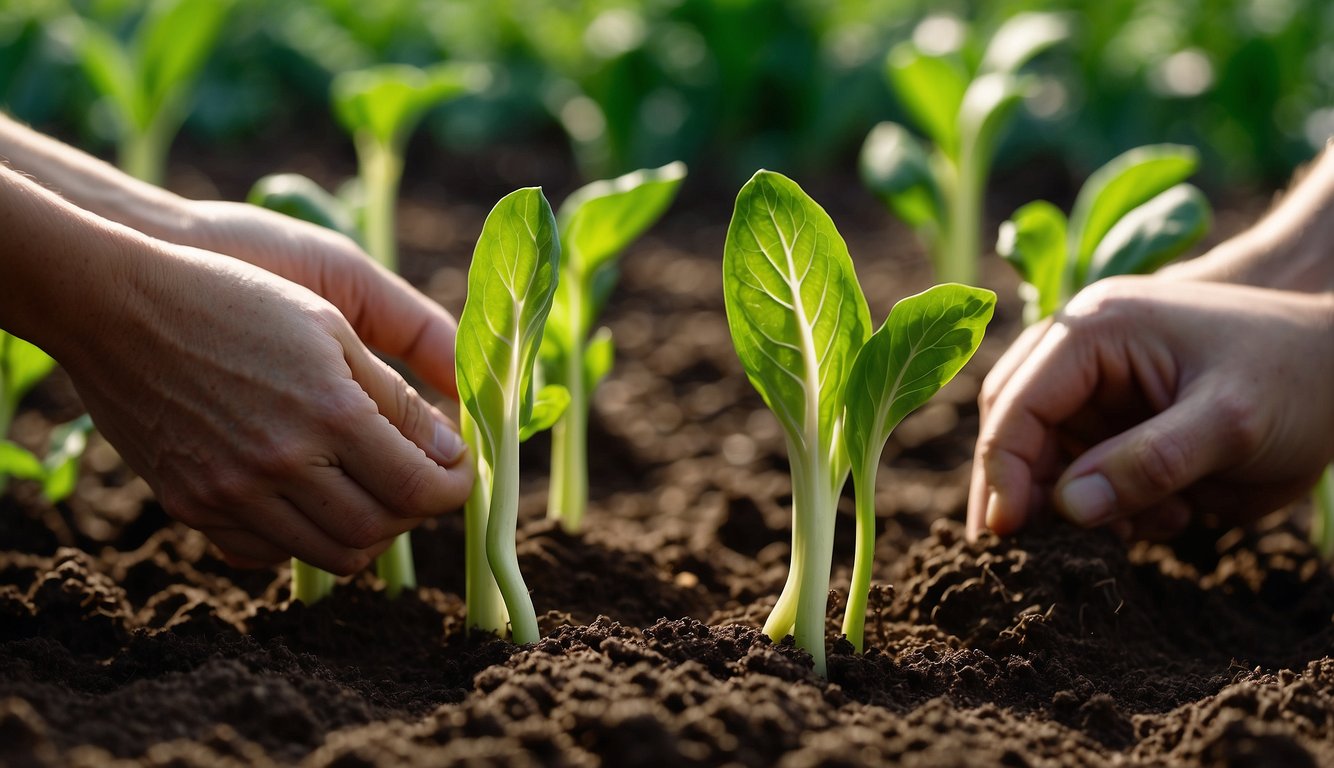
Optimal Conditions for Growth
To grow weird green vegetables successfully, you need to pay attention to a few key factors. Firstly, ensure that the soil is fertile and has the right pH level. Most green vegetables prefer a pH range of 6.0 to 7.5. You can use a soil testing kit to determine the pH level of your soil.
Secondly, ensure that the vegetables receive adequate watering. Overwatering can lead to root rot, while under-watering can lead to stunted growth. A good rule of thumb is to water the plants deeply once a week, or more frequently if the soil is dry.
Thirdly, ensure that the vegetables have reached maturity before harvesting. This is especially important for starchy vegetables like celeriac, which need time to develop their full flavor. You can tell if a vegetable is ready for harvest by checking its size and texture. A mature vegetable should be smooth and firm to the touch.
Harvesting and Post-Harvest
When it comes to harvesting weird green vegetables, timing is everything. You want to harvest the vegetables at their peak of ripeness, when they are most flavorful and nutritious. For most green vegetables, this means harvesting them when they are fully mature.
After harvesting, it is important to handle the vegetables carefully to prevent damage. You can store most green vegetables in the refrigerator for up to a week, but be sure to wrap them in a damp paper towel to prevent wilting.
Growing and cultivating weird green vegetables requires attention to detail and a bit of patience. By providing the right conditions for growth and harvesting the vegetables at the right time, you can enjoy a bountiful harvest of delicious and nutritious vegetables.
Global Varieties and Origins

As a lover of weird green vegetables, I have explored the globe to discover unique and exotic varieties. In my search, I have found that many of these vegetables have fascinating origins and are deeply rooted in the culture and cuisine of their native regions. In this section, I will share some of my findings on the global varieties and origins of these weird green vegetables.
African Indigenous Vegetables
Africa is home to a wide range of indigenous vegetables that are often overlooked in favor of more commonly known crops. One such vegetable is cassava, also known as manioc. Cassava is a starchy root vegetable that is a staple food in many African countries. It is often used to make fufu, a dough-like food that is eaten with soups and stews. Another African vegetable worth trying is amaranth, a leafy green that is packed with nutrients. Amaranth is often used in soups and stews and can also be sautéed or added to salads.
Vegetables Native to the Americas
The Americas are home to many unique and flavorful vegetables, including jicama and tomatillo. Jicama is a root vegetable that is native to Mexico and Central America. It has a crunchy texture and a slightly sweet flavor and is often used in salads and slaws. Tomatillos are a small, green fruit that are used to make salsa verde. They have a tart, citrusy flavor and are a staple in Mexican cuisine.
Asian Exotic Vegetables
Asia is home to a wide variety of exotic vegetables that are often used in traditional dishes. One such vegetable is daikon, a type of radish that is commonly used in Japanese cuisine. Daikon has a mild, slightly sweet flavor and is often grated and used as a garnish or added to soups and stews. Another Asian vegetable worth trying is Chinese long beans, also known as yardlong beans. These long, slender beans have a slightly sweet flavor and are often used in stir-fries and curries.
Oceania’s Unique Contributions
New Zealand, in particular, has contributed some unique vegetables to the world, such as kumara. Kumara is a type of sweet potato that is native to Polynesia and was brought to New Zealand by early Maori settlers. It has a sweet, nutty flavor and is often used in soups, stews, and curries.
Weird green vegetables can be found all over the world, and each region has its own unique and flavorful varieties. By exploring the global varieties and origins of these vegetables, we can gain a deeper appreciation for the diversity of our planet’s cuisine and the cultures that have shaped it.
Health and Dietary Considerations
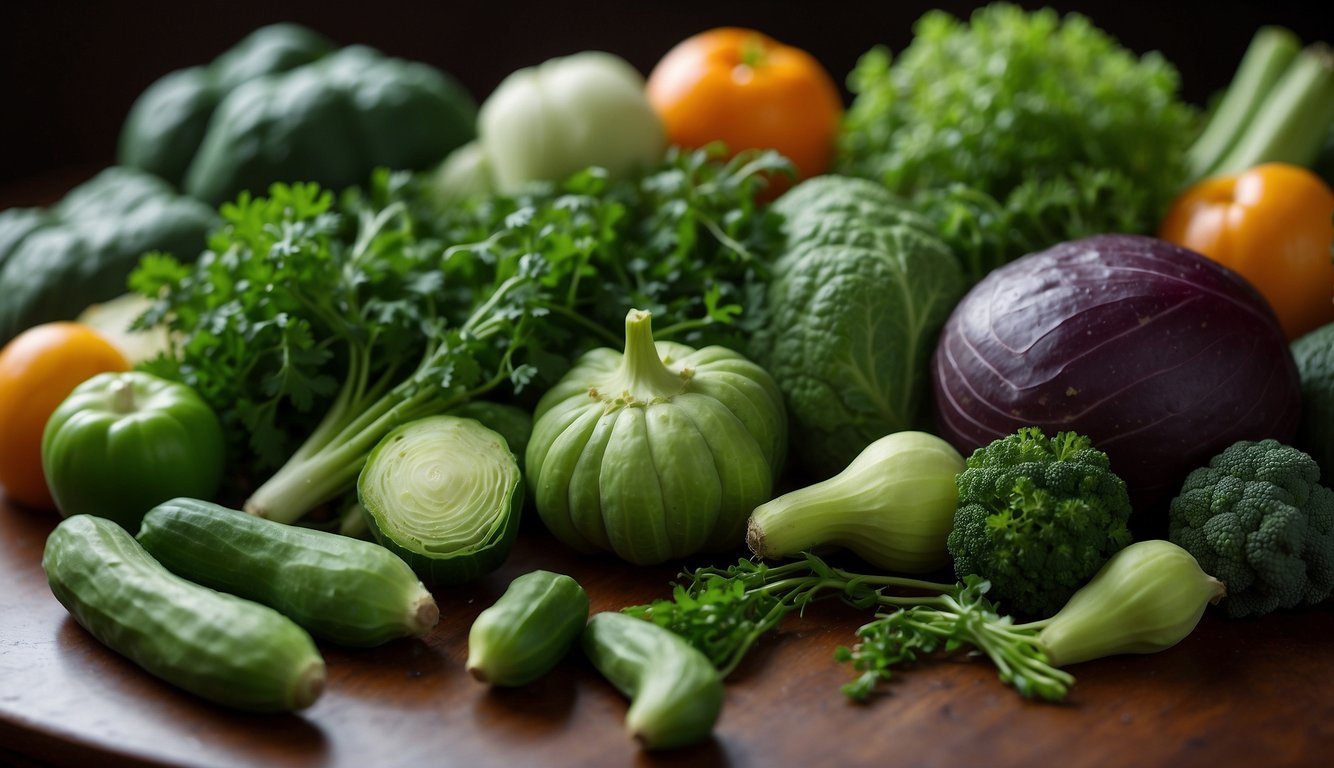
When it comes to incorporating weird green vegetables into your diet, it’s important to consider their nutritional benefits. Many of these vegetables are high in carbohydrates and fiber, making them great options for those looking to increase their intake of these nutrients. For example, the mashua tuber, which is often grown alongside other weird vegetables like ulluco and oca, is high in carbohydrates and fiber, making it a great addition to a balanced diet.
In addition to carbohydrates and fiber, many weird green vegetables are also rich in antioxidants. Antioxidants are important because they help protect your body against damage from free radicals, which can contribute to a variety of health issues. For example, kale is a great source of antioxidants, as are other leafy green vegetables like spinach and Swiss chard.
Another important nutrient to consider when incorporating weird green vegetables into your diet is vitamin K. Vitamin K is important for a variety of functions in the body, including blood clotting and bone health. Many weird green vegetables are rich in vitamin K, including kale, spinach, and collard greens.
Overall, incorporating weird green vegetables into your diet can be a great way to increase your intake of important nutrients like carbohydrates, fiber, antioxidants, and vitamin K. Whether you’re looking to try something new or simply want to add some variety to your diet, there are plenty of weird green vegetables out there to choose from.
Market Availability and Selection Tips – Weird Green Vegetables

Farmers Markets and Organic Stores – Weird Green Vegetables
As someone who loves to experiment with new and rare vegetables, I have found that farmers markets and organic stores are wonderful places to find fresh and unique produce. These markets often have a wider selection of vegetables than traditional grocery stores, and the produce is usually grown locally, making it fresher and more flavorful.
When shopping at farmers markets and organic stores, I recommend taking the time to talk to the vendors. They are often passionate about their produce and can provide valuable information about how to prepare and cook the vegetables. Additionally, they may have recommendations for other rare or unusual vegetables that you may be interested in trying.
Seasonal Availability
It’s important to keep in mind that not all vegetables are available year-round. Many rare and unusual vegetables have a limited growing season, and may only be available during certain times of the year. For example, kohlrabi is a fall vegetable and may only be available during the autumn months.
To ensure that you are able to find the vegetables you are interested in, I recommend doing some research beforehand. Look up the seasonal availability of the vegetables you are interested in, and plan your shopping accordingly. Additionally, be open to trying new vegetables that are in season, as they may be just as delicious as the ones you had your heart set on.
When selecting vegetables at the market, be sure to choose ones that are firm, brightly colored, and free of blemishes. This will ensure that you are getting the freshest and most flavorful produce possible.
Overall, farmers markets and organic stores are great places to find rare and unusual vegetables. By taking the time to talk to vendors and doing some research on seasonal availability, you can ensure that you are able to find the vegetables you are interested in and enjoy them at their peak freshness and flavor.
Weird Green Vegetables
Today, we’re venturing into the world of weird green vegetables. Buckle up, it’s going to be a wild ride!
First up, the Romanesco. This funky veggie is a type of cauliflower, but with a twist! It’s got a unique, fractal pattern that’s a feast for the eyes and the palate.
Next, the Kohlrabi. This alien-looking vegetable is a member of the cabbage family. It’s got a sweet, crisp taste that’s out of this world!
And let’s not forget the Fiddlehead Ferns. These curly veggies look like the scroll of a violin. They’re a delicacy in many cultures and taste as interesting as they look!
So, next time you’re at the farmers’ market, why not pick up some weird green veggies? They’re a fun, tasty way to shake up your meals!
For more veggie adventures, do visit the website theherbprof.com. Keep it green, folks!
References – Weird Green Vegetables
Little Herb Encyclopedia, by Jack Ritchason; N.D., Woodland Publishing Incorporated, 1995
The Ultimate Healing System, Course Manual, Copyright 1985, Don Lepore
Planetary Herbology, Michael Tierra, C.A., N.D., Lotus Press, 1988
Handbook of Medicinal Herbs, by James A. Duke, Pub. CRP Second Edition 2007
The Complete Medicinal Herbal, by Penelope Ody, Published by Dorling Kindersley
Check the Following Articles!
Cooking Elephant Garlic: Tips & Tricks for a Delicious Meal
Best Organic Fertilizer for Tomatoes: Boost Your Harvest
Best Tasting Early Tomato Varieties for Your Garden
Frequently Asked Questions – Weird Green Vegetables
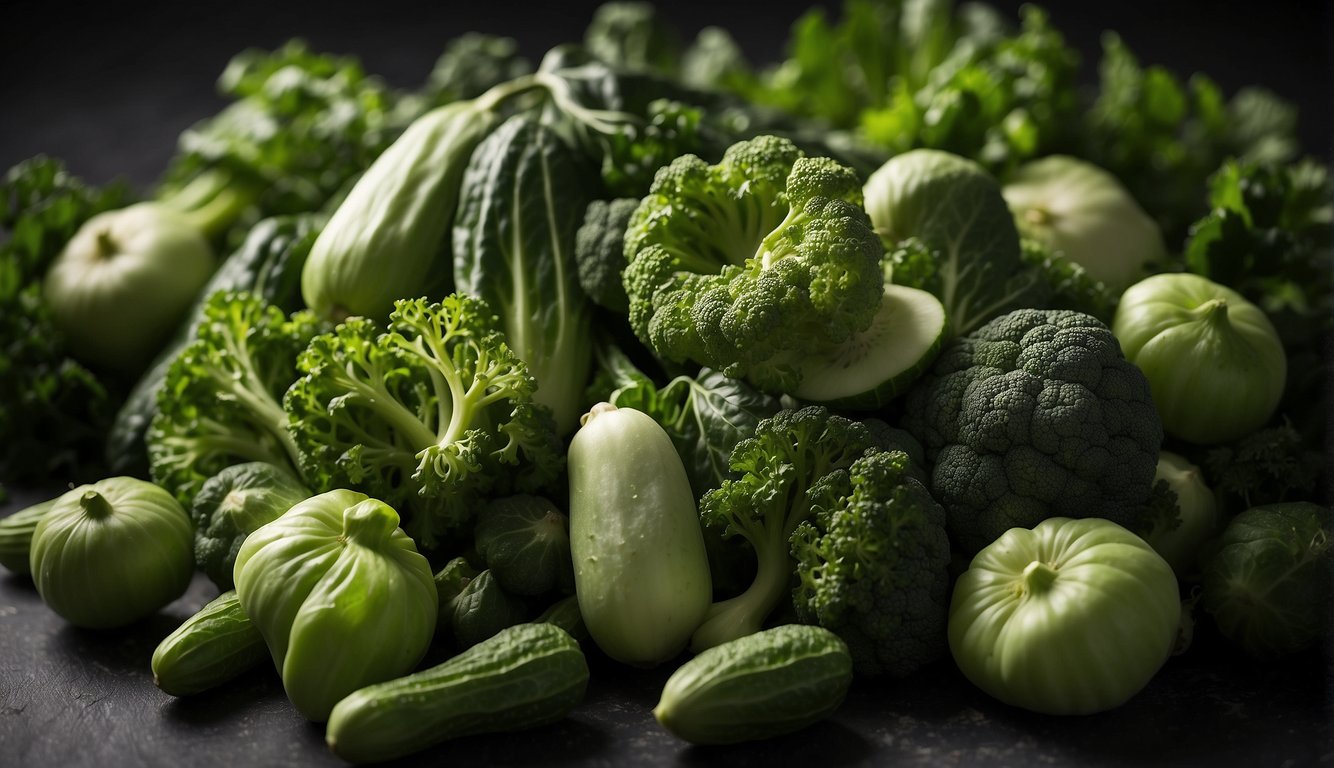
What are some unique green vegetables that are edible?
There are many unique green vegetables that are edible. Some examples include bok choy, kale, collard greens, and Swiss chard. These vegetables are not only delicious but also packed with nutrients. They can be cooked in a variety of ways, including stir-frying, sautéing, and steaming.
Can you name some exotic green vegetables found in the United States?
Yes, there are many exotic green vegetables found in the United States. Some examples include bitter melon, chayote, and purslane. Bitter melon is a green vegetable that is commonly used in Asian cuisine and is known for its bitter taste. Chayote is a pear-shaped vegetable that is commonly used in Latin American cuisine and has a mild flavor. Purslane is a leafy green vegetable that is commonly used in Mediterranean cuisine and is known for its slightly sour taste.
What are some rare green vegetables that are also fruits?
Some rare green vegetables that are also fruits include malabar spinach, kiwano, and cucamelon. Malabar spinach is a leafy green vegetable that is commonly used in Asian cuisine and has a slightly slimy texture. Kiwano, also known as horned melon, is a fruit that is native to Africa and has a spiky exterior and a green jelly-like interior. Cucamelon, also known as Mexican sour gherkin, is a small fruit that looks like a miniature watermelon and has a slightly sour taste.
What are ten unusual vegetables that may be green?
Ten unusual vegetables that may be green include Romanesco broccoli, kohlrabi, celtuce, mizuna, tatsoi, komatsuna, dandelion greens, amaranth greens, watercress, and sorrel. These vegetables have unique flavors and textures and can be used in a variety of dishes.
What are the names of some green vegetables that have an unusual appearance?
Some green vegetables that have an unusual appearance include celeriac, kohlrabi, and fiddlehead ferns. Celeriac is a root vegetable that has a knobby exterior and a mild celery-like flavor. Kohlrabi is a bulbous vegetable that has a slightly sweet flavor and can be eaten raw or cooked. Fiddlehead ferns are the curled, immature fronds of certain types of ferns and have a nutty flavor.
Which green vegetable is recognized for its bumpy texture?
The green vegetable that is recognized for its bumpy texture is the chayote. Chayote has a pear-like shape and is covered in small bumps. It has a mild flavor and can be cooked in a variety of ways, including boiled, baked, and fried.
